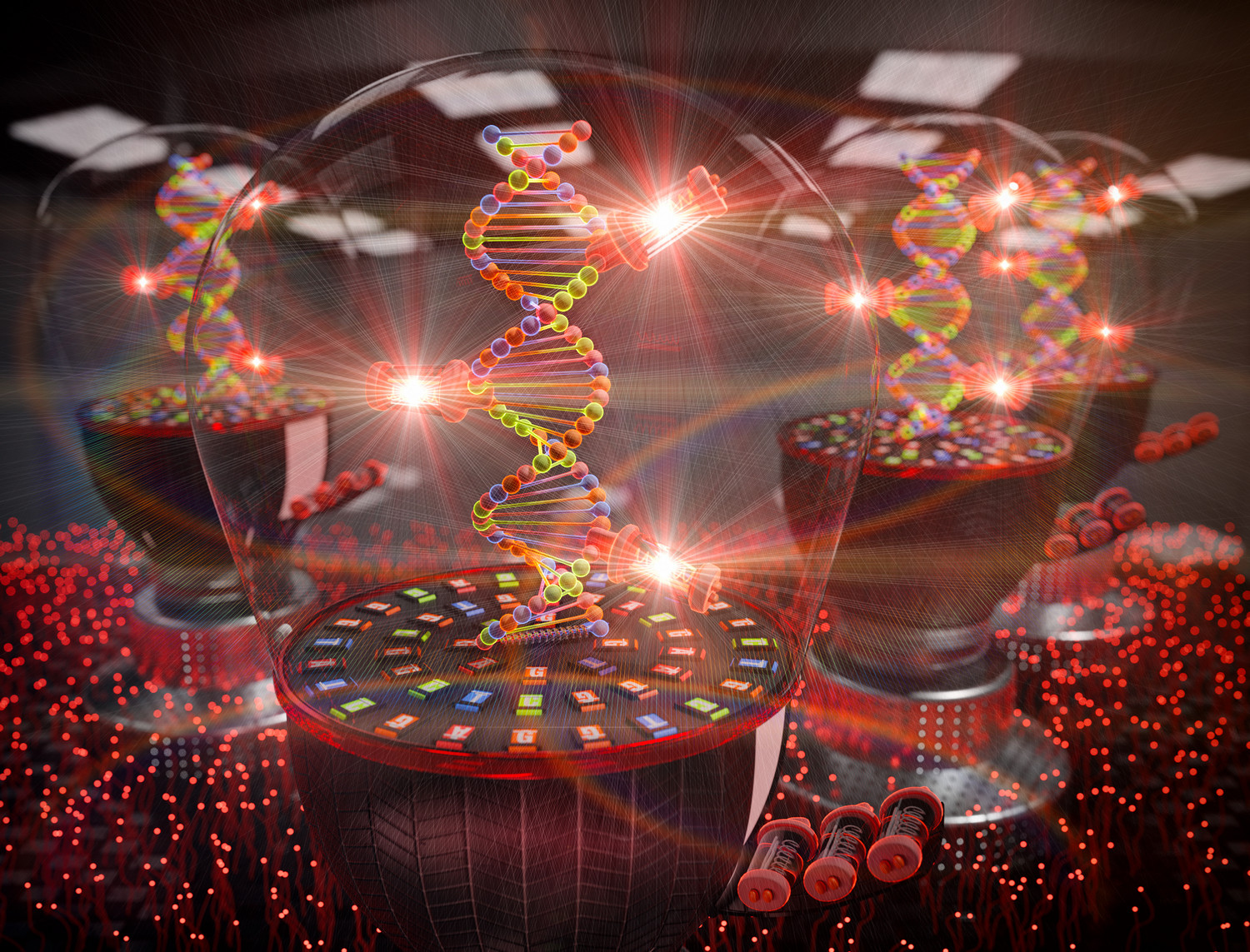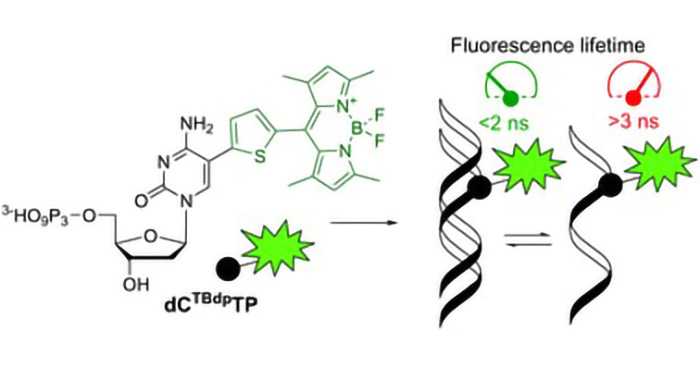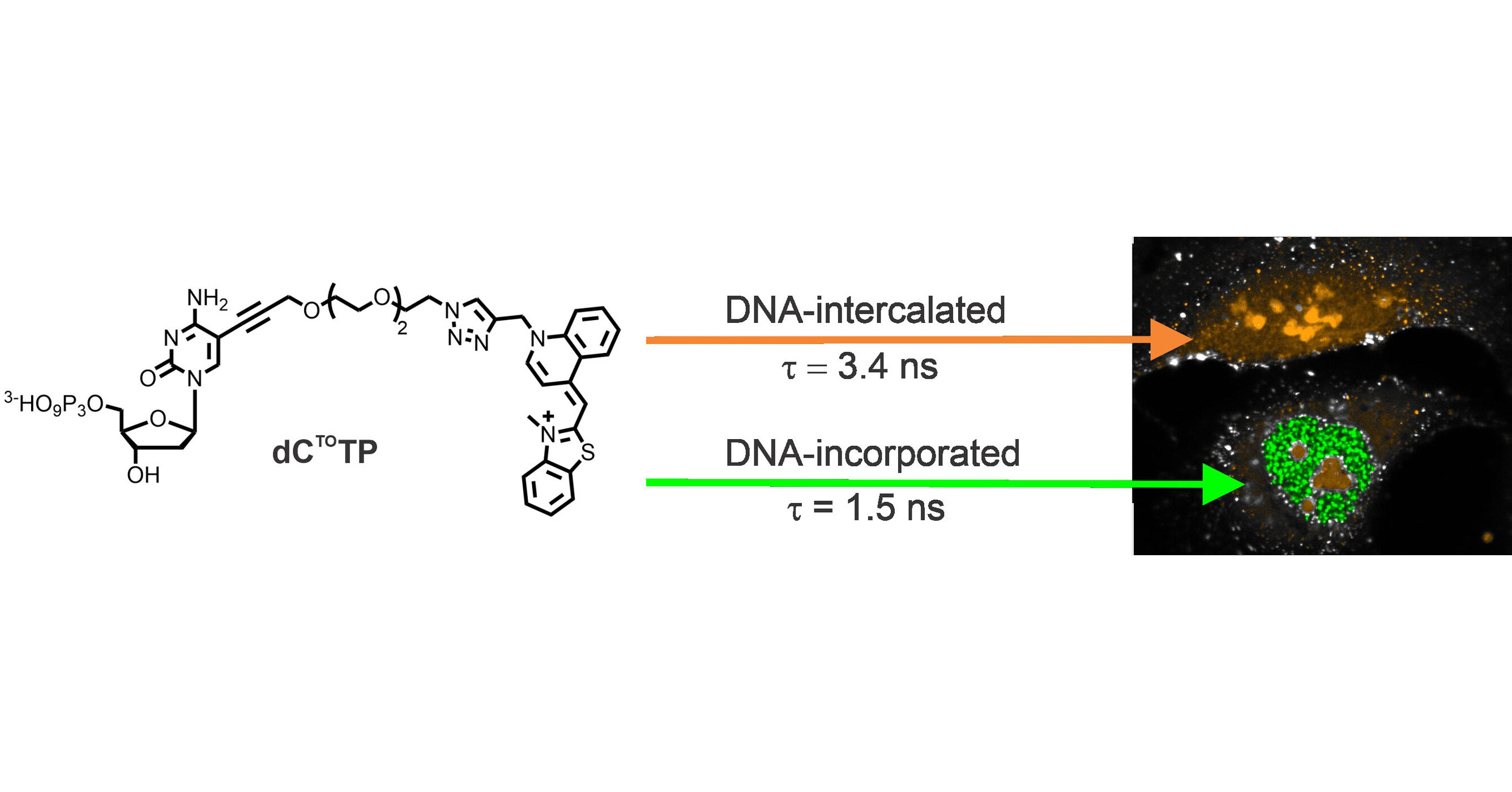
Fluorescent labelling of nucleic acids is a valuable tool with widespread usage in molecular and cellular biology as well as diagnostics. The team of researchers led by Michal Hocek from IOCB Prague have synthesized a novel thymidine triphosphate substituted with a fluorophore, which only very weakly emits in the near-infrared spectrum. However, after incorporation of the labelled nucleotide to DNA by DNA polymerase, the fluorophore lights up hundreds-fold (through interactions of the fluorophore in the major groove of DNA).
This labelled nucleotide can serve for direct detection and visualization of DNA synthesis by fluorescent spectroscopy. In addition, the labelled DNA is responsive to the secondary structure changes and major groove interactions .
So far, the applications are restricted to in vitro experiments since the nucleotide is toxic to live cells (but the researchers are working on alternative fluorophores and linkers to decrease the toxicity and enable imaging of DNA synthesis in vivo). One of the in vitro applications demonstrated in the paper was the use of the labelled nucleotide in real-time PCR assays exemplified in the detection of viral RNA from the SARS-CoV-2 virus.
The discovery was reported in Chemistry – A European Journal, where it will be featured on the cover.

Original paper: Kuba, M.; Kraus, T.; Pohl. R.; Hocek, M.: "Nucleotide bearing benzylidene-tetrahydroxanthylium near-IR fluorophore for sensing DNA replication, secondary structures and interactions" Chem. Eur. J. 2020. https://doi.org/10.1002/chem.202003192






